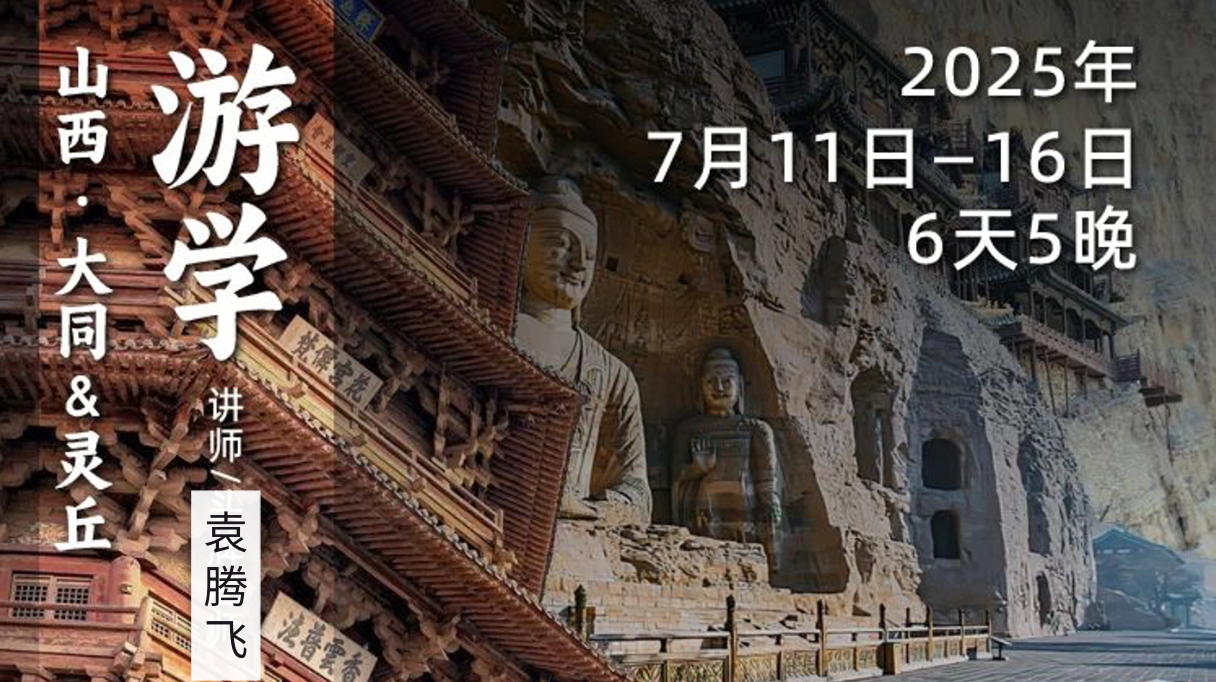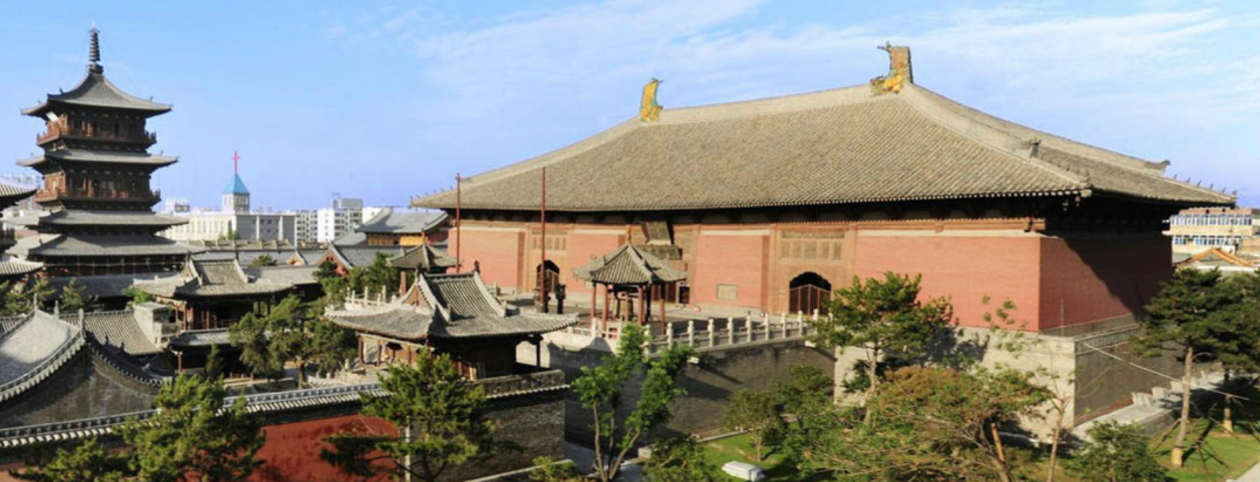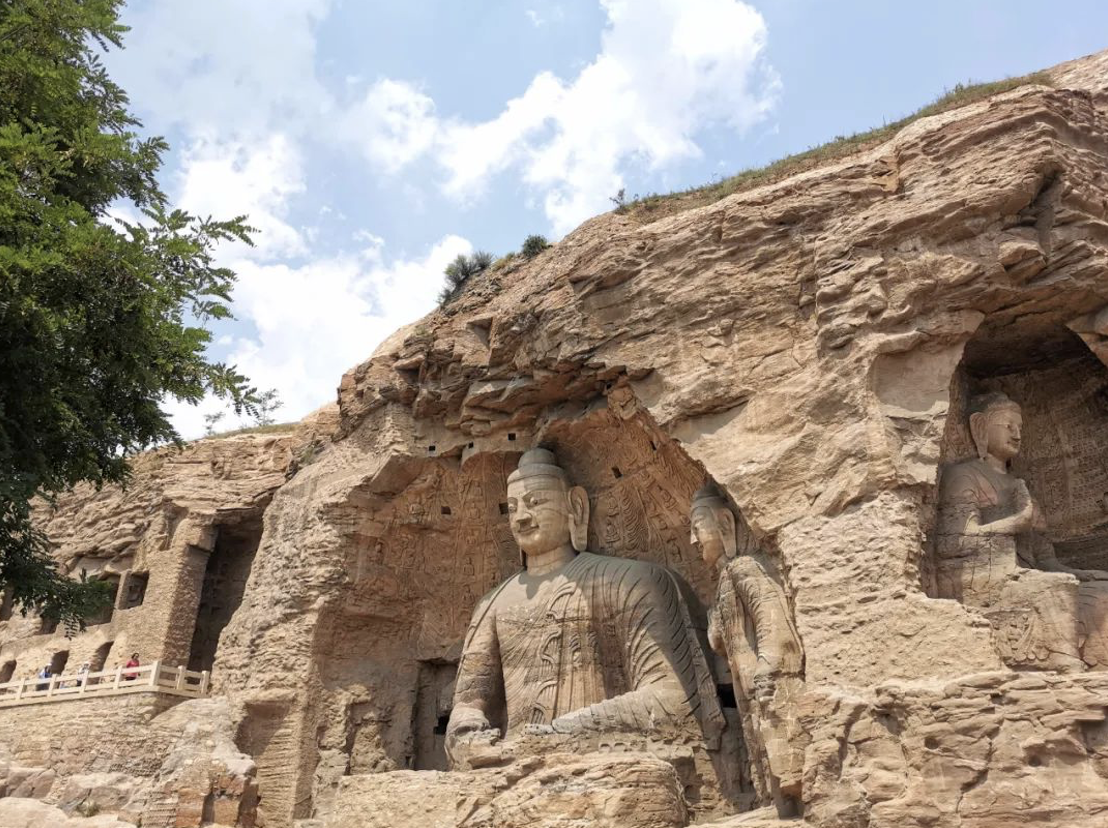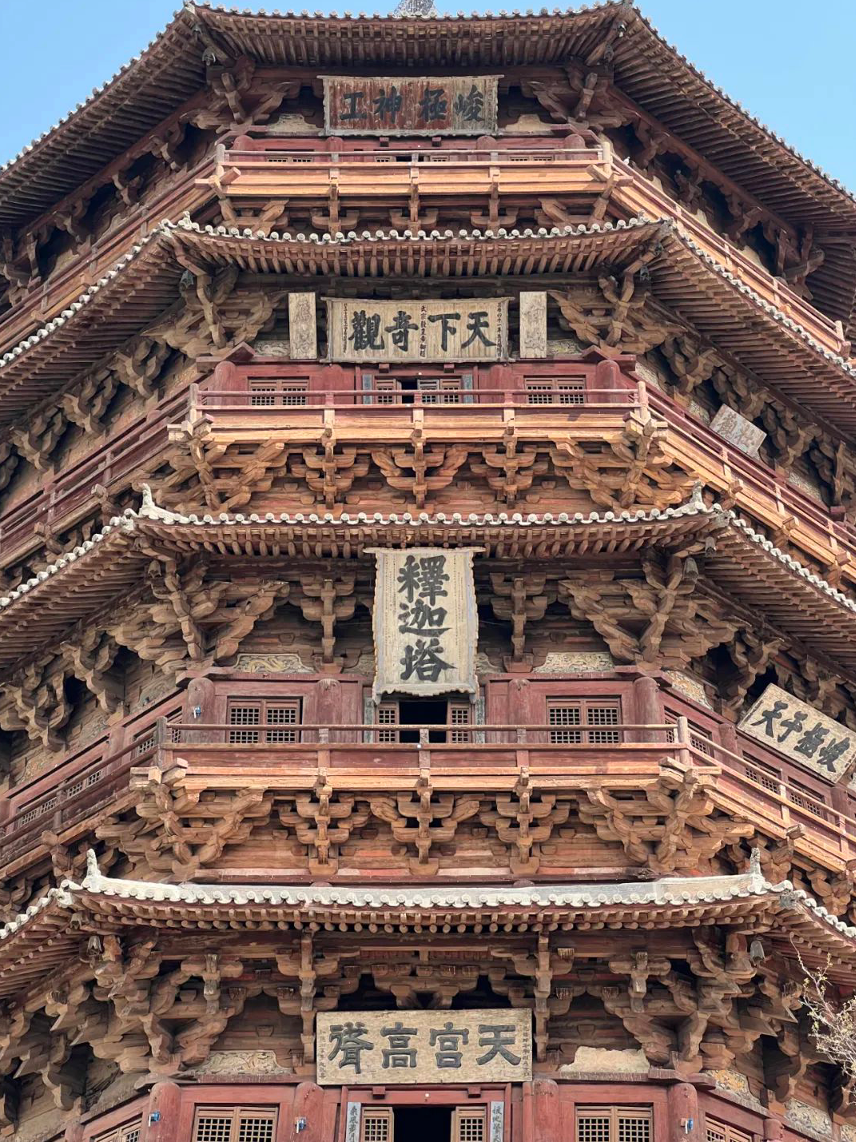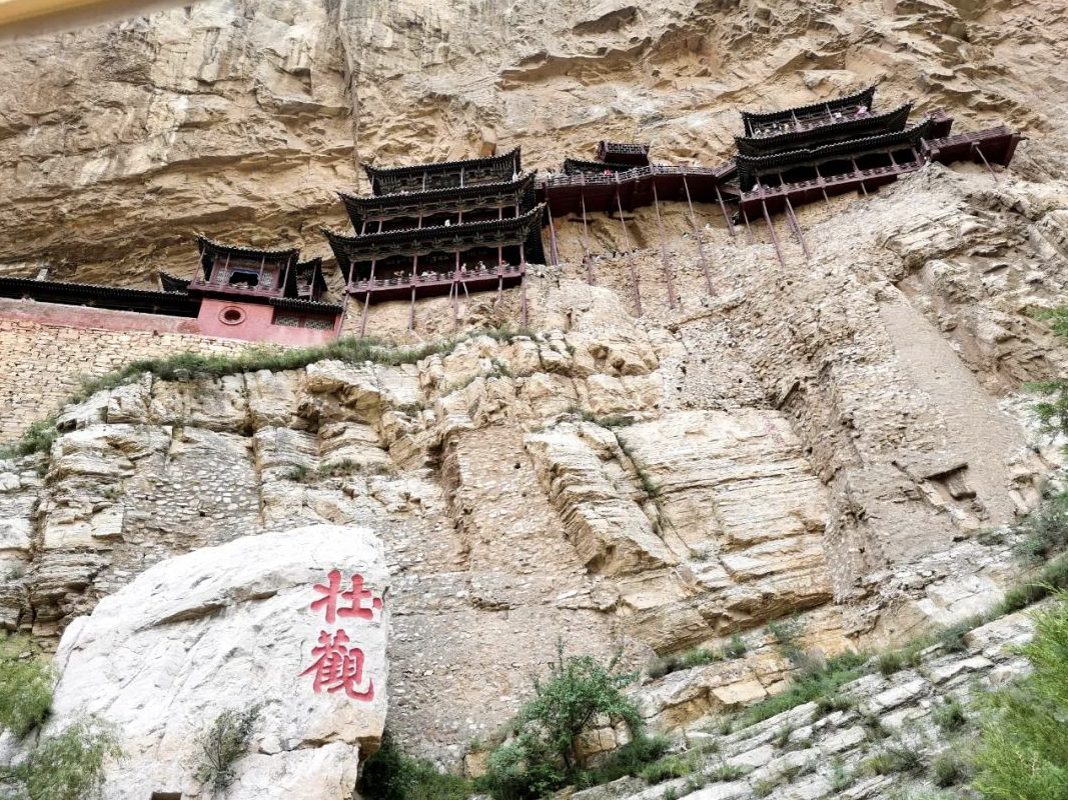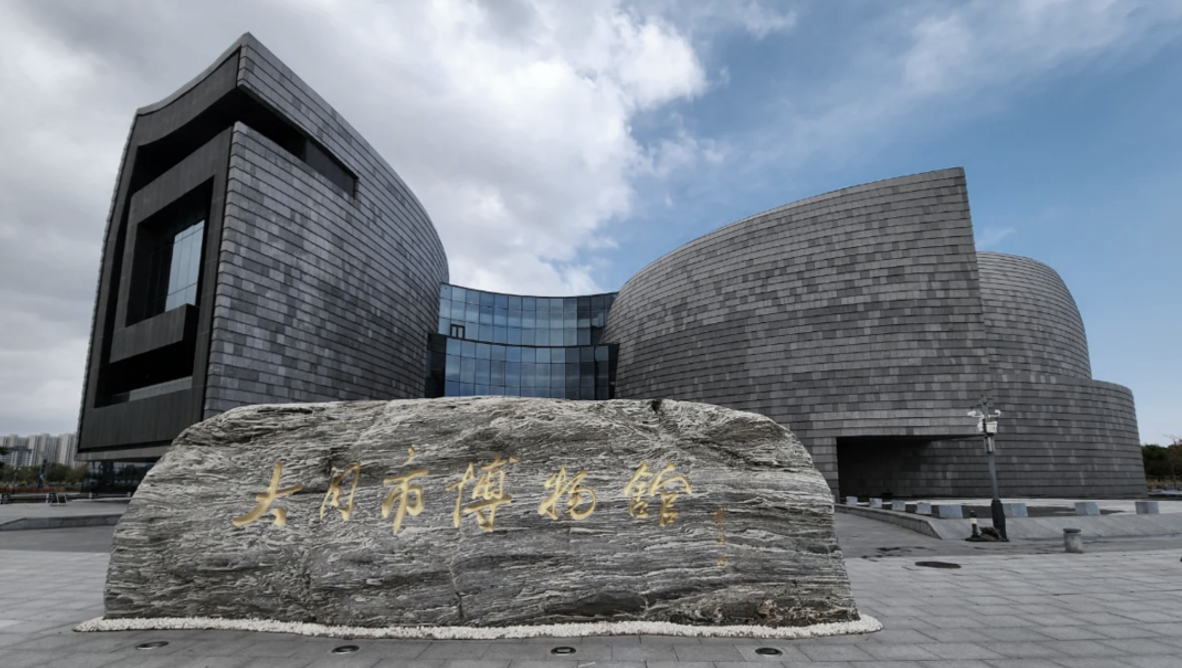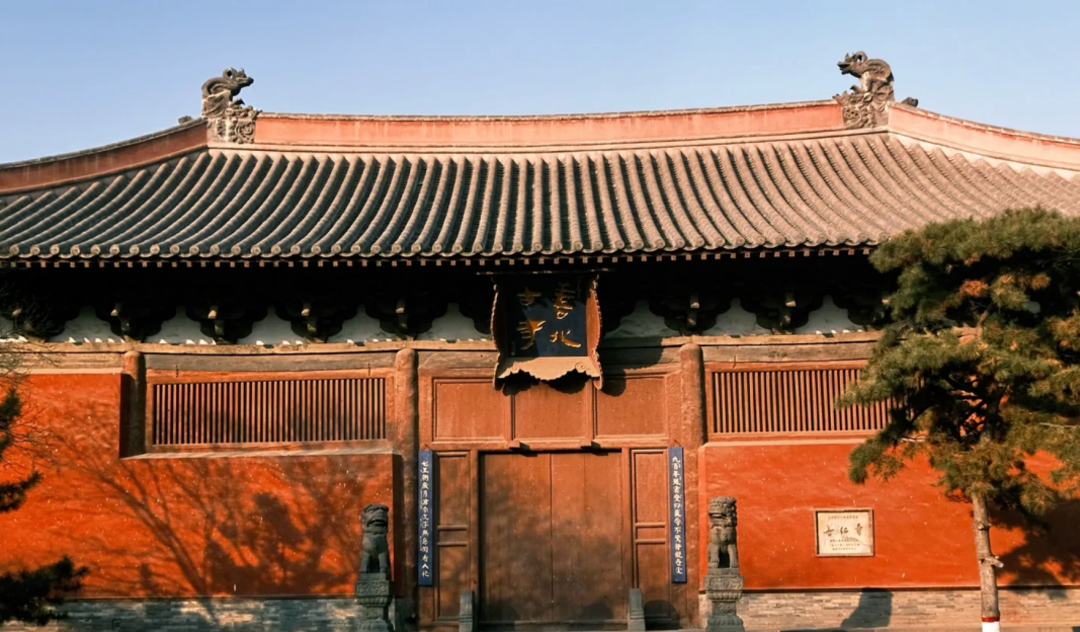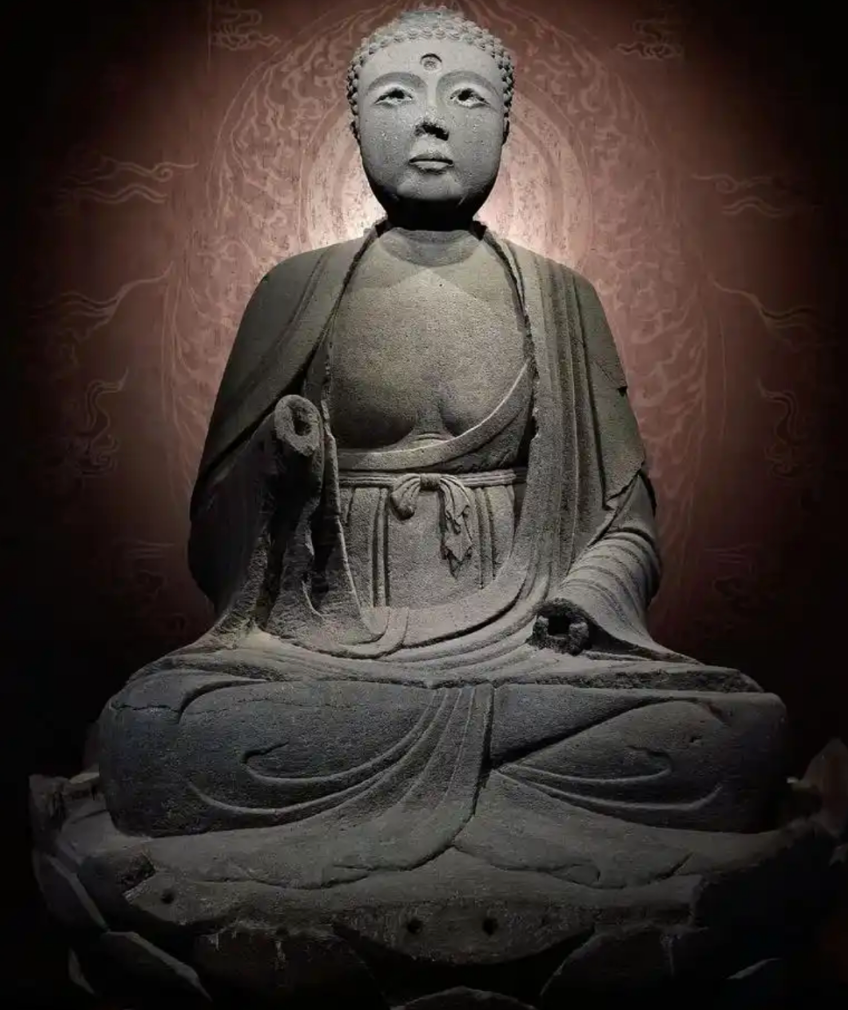LIFEANO 给生活另一种可能
July 11-16, 2025 | Traveling in Shanxi: Teacher Yuan Tengfei takes you to witness the fusion of history and culture in northern Shanxi
July 11-16, 2025 | Traveling in Shanxi: Teacher Yuan Tengfei takes you to witness the fusion of history and culture in northern Shanxi
Out of stock
Couldn't load pickup availability
Summer 2025
The Study Tour Group will come to Shanxi again
Some people say that every ancient temple in the mountains is a living museum.
In Shanxi, at a glance
That is the overlapping of light and shadow for thousands of years
That is the long-standing Chinese civilization.
In this province with the richest ancient architecture in China
Cultural relics and historical sites that once slept in the wild mountains
Now it has become a check-in spot for countless history, culture and ancient architecture enthusiasts.
This summer
Let us follow the footsteps of " the best history teacher in history "
Let’s understand Shanxi and China together
Team leader
Teacher Yuan Tengfei
Hailed by fans as " the best history teacher in history "
NO.1— Huayan Temple

Located in the southwest corner of the ancient city of Datong, it was first built in the seventh year of the Chongxi reign of the Liao Dynasty ( 1038 AD) and was named after the Buddhist classic "Avatamsaka Sutra". It was a royal temple of the Liao Dynasty and had a prominent status. It was later destroyed in a war and rebuilt in the third year of the Tianjuan reign of the Jin Dynasty ( 1140 AD).
Huayan Temple is located from west to east. More than 30 individual buildings, including the mountain gate, Pu Guangming Hall, Mahavira Hall, Bhagavad Gāthāna Hall, and Huayan Pagoda, are arranged on the north-south main axis, with a rigorous layout. Covering an area of 66,000 square meters, it is one of the earliest and best-preserved Liao and Jin temple complexes in China. In 1961 , it was announced by the State Council as the first batch of national key cultural relics protection units.
No.2— Yungang Grottoes

Originally named Lingyan Temple and Shifo Temple, it is located at the southern foot of Wuzhou Mountain and the northern bank of Wuzhou River in the western suburbs of Datong City, Shanxi Province. The highest point of Wuzhou Mountain is called Yungang, hence the name Yungang Grottoes. The rulers of the Northern Wei Dynasty worshipped Buddhism, built many temples, and opened many grottoes. The main part of this grotto group was completed before the Northern Wei Dynasty moved its capital to Luoyang, from the first year of Heping to the eighteenth year of Taihe (460-494) . The grottoes were carved into the mountain, stretching 1 km from east to west. The grotto area is divided into three areas: east, middle, and west from east to west according to the natural terrain of the mountain. There are 45 main caves and 209 subsidiary caves , with a carving area of more than 18,000 square meters. The highest statue is 17 meters and the smallest is 2 centimeters. There are about 1,100 niches and more than 59,000 statues of various sizes .
After the founding of New China, the Yungang Grottoes Cultural Relics Conservation Institute (now the Yungang Grottoes Research Institute) was established . In 1961 , it was announced by the State Council as the first batch of national key cultural relics protection units. On December 14, 2001 , it was listed as a World Heritage Site by UNESCO.
NO.3— Sakya Pagoda (Yingxian Wooden Pagoda )

The full name is the Sakyamuni Pagoda of Fogong Temple. It is located in Fogong Temple in the northwest of Ying County, Shuozhou City, Shanxi Province, commonly known as the Ying County Wooden Pagoda.
It was built in the second year of Qingning in Liao Dynasty (the third year of Zhihe in Song Dynasty 1056 AD) and completed in the sixth year of Mingchang in Jin Dynasty (the first year of Qingyuan in Southern Song Dynasty 1195 AD). It is the oldest and tallest existing wooden pagoda in the world and a national key cultural relic protection site. In 2016 , Sakyamuni Pagoda was recognized by Guinness World Records as the tallest wooden pagoda in the world.
NO.4— Hanging Temple

It is located on the cliffs of Cuiping Peak on the west side of Jinlong Gorge in Hengshan Mountain, Hunyuan County, Datong City, Shanxi Province. It was originally called "Xuankong Pavilion". "Xuan" was taken from the Chinese Taoist doctrine and "kong" was derived from the Buddhist doctrine. Later it was renamed "Hanging Temple" because the whole temple seems to be hanging on a cliff. In Chinese, "xuan" and "xuan" are homophones, hence the name.
The Hanging Temple was first built in the late Northern Wei Dynasty ( 491 AD ), more than 1,500 years ago. It is a unique temple that combines Buddhism, Taoism and Confucianism. The "Hanging Temple" has a unique architecture and is known for its steepness, as if it is facing the abyss. There is a slang saying that "The Hanging Temple is half a day high, and three horsetails are hanging in the air." It is known for its steepness, as if it is facing the abyss.
The Hanging Temple is a national key cultural relic protection site and the "first scenic spot" among the 18 scenic spots of Hengshan Mountain. In 2010 , it was selected as one of the top ten most endangered buildings in the world by Time magazine.
Note: Due to the long queues during the summer, the Hanging Temple will not be visited to avoid affecting the subsequent itinerary.
NO.5— Datong Museum

Datong City Museum is a geographical comprehensive museum and the largest museum in northern Shanxi. It currently has a collection of more than 170,000 cultural relics, including more than 3,000 precious cultural relics. The collection is famous for its northern literary and artistic culture, frontier town culture, and religious culture. It concentrates on the fusion genes of the Datong region, especially the fine cultural relics from the Northern Wei, Liao and Jin dynasties, which are often renowned.
As a place where the Han ethnic group and cultural heritage meet, Datong has always been a place of multi-ethnic integration since the "Hu clothing and horse riding" of King Wuling of Zhao, the capital of Pingcheng established by Tuoba Xianbei in the Northern Wei Dynasty, and the Liao, Jin, Yuan, Ming and Qing Dynasties. As a local museum, it has opened four historical exhibitions: "The vicissitudes of the Dai Dynasty", "Pingcheng in the Northern Wei Dynasty", "Xijing in the Liao and Jin Dynasties", and "Important Towns in the Ming and Qing Dynasties".
NO.6— Shanhua Temple

Located in Jinci Town, Jinyuan District, Taiyuan City, Shanxi Province, it was formerly known as Jinwang Temple and initially named Tang Shuyu Temple. It was built to commemorate Tang Shuyu (later posthumously named King of Jin), the founding prince of the State of Jin, and his mother, Queen Yi Jiang.
Shanhua Temple, commonly known as Nan Temple, still retains the Tang Dynasty style in its layout. According to the temple stele, it was first built during the Kaiyuan period of the Tang Dynasty and was called Kaiyuan Temple. It was renamed Da Pu'en Temple during the Five Dynasties and Later Jin Dynasty. Monk Yuanman of the Jin Dynasty presided over the reconstruction. In the tenth year of Zhengtong ( 1445 ), Emperor Yingzong of the Ming Dynasty named it Shanhua Temple, which has been used ever since.
Shanhua Temple is the largest and most complete building from the Liao and Jin Dynasties in China. The front is the mountain gate and the middle is the Three Saints Hall, both of which were built during the Jin Dynasty. The Great Hall of the Buddha, a relic of the Liao Dynasty, is located on a high platform at the back, with the East and West Duo Halls on its left and right. The east side is the site of the Wenshu Pavilion, and the west side is the Puxian Pavilion built in the second year of the Zhenyuan period of the Jin Dynasty ( 1154 ). Except for the Heavenly King Hall (mountain gate), the Three Saints Hall, the Great Hall of the Buddha and the Puxian Pavilion, which are Liao and Jin buildings, the other side halls and the bell and drum towers are Ming and Qing Dynasty buildings. There are 34 statues from the Jin Dynasty and 190 square meters of murals from the Qing Dynasty preserved in the temple. There are 9 statues from the Ming Dynasty, 2 Jin steles, and 3 Ming and Qing Dynasty reconstruction steles. The temple preserves precious cultural relics such as clay sculptures, murals, and inscriptions. Among them, the clay sculptures of the Jin Dynasty are beautifully shaped and have outstanding personalities, especially the statues of the 24 Heavenly Kings. They are male, female, old, young, beautiful, ugly, civil, and military. Some are dressed as emperors, some are ministers, some are bare-chested and barefoot, wearing gauze clothes as if they came from the land of India, and some are wearing armor and fur to resist the cold wind from the north. They are full of the flavor of life. Very contagious. They are the treasures of the country.
NO.7— Museum of Ethnic Integration of Liao, Jin and Yuan Dynasties

The Liao, Jin and Yuan National Integration Museum has a total of 257 pieces (sets) of collections and 42 pieces ( sets ) of precious cultural relics. The museum is the fifth branch of Datong Museum. It has a rich collection of pottery, porcelain, jade, wood, gold and silver, glass, stone carvings, statues, silk fabrics, etc. from the Liao, Jin and Yuan dynasties. In particular, the exhibition of fine porcelain provides valuable material for studying the life history of the Liao, Jin and Yuan ethnic groups. The museum has held the "Xijing Fenghua - Liao, Jin and Yuan National Integration Cultural Exhibition", which selected more than 240 pieces (sets) of fine cultural relics from the Liao, Jin and Yuan dynasties, and fully displayed the style of Xijing in the Liao, Jin and Yuan dynasties.
No. 8— Ashoka Stupa
 Ashoka Pagoda, commonly known as the White Pagoda, is located in Yuanguo Temple in the ancient city of Dai County, Xinzhou City, Shanxi Province. It was first built in the first year of Renshou in the Sui Dynasty ( 601 AD) and suffered three disasters in the 600 years since its construction. It was rebuilt into a brick pagoda in the 12th year of Zhiyuan in the Yuan Dynasty ( 1275 AD).
Ashoka Pagoda, commonly known as the White Pagoda, is located in Yuanguo Temple in the ancient city of Dai County, Xinzhou City, Shanxi Province. It was first built in the first year of Renshou in the Sui Dynasty ( 601 AD) and suffered three disasters in the 600 years since its construction. It was rebuilt into a brick pagoda in the 12th year of Zhiyuan in the Yuan Dynasty ( 1275 AD).
The Ashoka Stupa is a conical Tibetan Buddhist style with a rectangular base. The Stupa is built in the center of the base. The Stupa is circular in plan, with a slightly wider upper shoulder and a round stupa-style body. The Stupa is made of bricks with 11 layers of wheels. The brick carving is superb and is a masterpiece of Chinese Tibetan Stupas. The base of a general Lama Stupa is square, but the base of this Stupa is a perfect circle. The Ashoka Stupa and the White Pagoda of Miaoying Temple in Beijing are both examples and models of early Lama Stupas in the Central Plains.
Registration Instructions
Assembly / disbandment
● The group will gather in Datong on July 11 , 2025 (Friday) and disband in Datong on July 16 (Wednesday). Please arrange your schedule before and after the gathering properly.
Precautions
● Customer service will contact you one week in advance after registration , please keep your WeChat and phone open ;
● Children under 6 years old are not recommended to participate. Minors aged 6-14 and seniors over 70 years old must be accompanied by family members to register together ;
Activity Fees
● The fee includes: meals, accommodation, transportation and lecturer explanations from the time of gathering to the time of disbanding; it does not include: round trips before the gathering and after the disbanding, and other expenses not listed ;
Hassle-free refund policy
● If the event is cancelled due to reasons of the organizer , all fees will be refunded;
● If the event is cancelled due to force majeure , the unincurred fees will be refunded ;
● If you are unable to attend the event due to personal reasons , no fees will be refunded ( the spot is transferable ). Please do not take pictures if you mind. Thank you for your understanding.
Share
